How dangerous chemicals are in plastic consumer products
'Plastic' should probably be ranked as one of the hottest keywords in 2019 and most likely for many years to come, but not for the benefit but the negative consequences that bring it to health. humans as well as the living environment on the planet.
By now, almost everyone knows that our earth is flooded with asphalt. Plastic is present in every kitchen, market, supermarket, lane, deeply ingrained in the daily life of billions of people on the planet. But the journey has not stopped there, plastic waste appears on every meter of the sidewalk, in every forest, on the rivers, covering the oceans and even in the outer space . all all thanks to the "ingenuity" of humans.
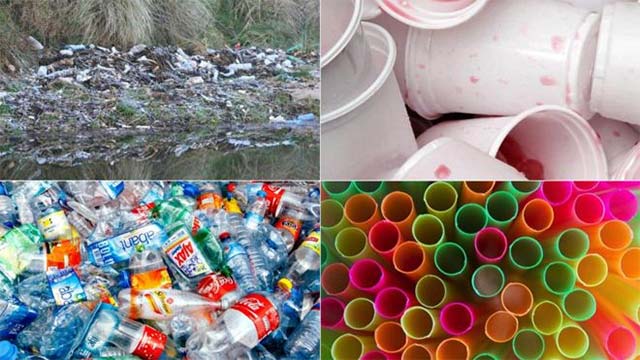 Plastic is ubiquitous and becomes an integral part of modern life
Plastic is ubiquitous and becomes an integral part of modern life
- Manufacturing electric cables from plastic waste - A great plan for the current situation of plastic waste pollution worldwide
Impact of plastic on human health
- Plastic and its connection to human health
- Identify some harmful plastics
- Minimize harm from plastic
Plastic and its connection to human health
However, in this article, we will not discuss much about the harmful effects of plastic waste on the earth's environment, but instead, let's discuss the chemicals in plastic preparations and the dangers. Their risk to human health. A newly published study could cause even the most 'stubborn' people to rethink the level and habits of their plastic products.
A team of scientists from Norway has been working on a long list of everyday items made of plastic - from small things like yogurt mugs and bath sponges. to large plastic trays and plates. Combining shows that up to three-quarters of the products surveyed contain toxic chemicals, which can seriously harm human health.
- How have humans been using plastic to destroy nature?
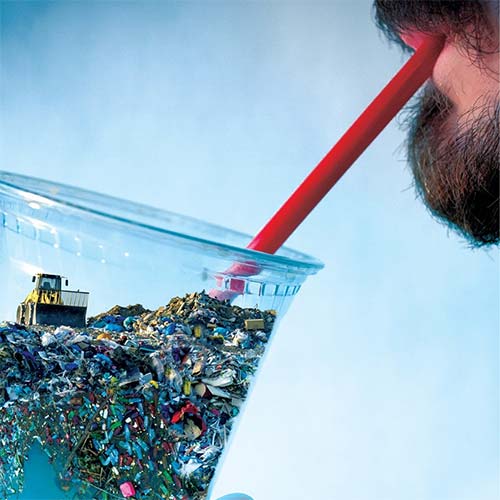 Plastic contains many chemicals that can seriously harm human health.
Plastic contains many chemicals that can seriously harm human health.
"The problem is that plastic is a compound made up of a series of complex chemicals, so we often don't know the exact 'identity' of substances and their content in the product. plastics that we use. "For most of the thousands of chemicals used to make plastics, we have absolutely no way of knowing whether all of them are safe or not. This is because it is extremely difficult to thoroughly monitor all the components that make up the plastic. In many cases, even manufacturers cannot specify the chemical composition of their products. On the other hand, even if they know it well, they are not forced to disclose this information, '' said Professor Martin Wagner, a biologist at the Norwegian University of Science and Technology, who co-authored the study. said in a statement.
Yes, it is not easy to isolate and isolate specific chemicals in plastics. In fact, there are more than 5,000 different types of resins in common use around the world, with tens of thousands of separate chemicals being used to produce them. Currently, researchers only know detailed information on more than 4,000 types of chemicals used in packaging, trays, plastic food containers, while the actual number of chemicals is considered large. more.
- Picking up marine waste sorted into impressive works
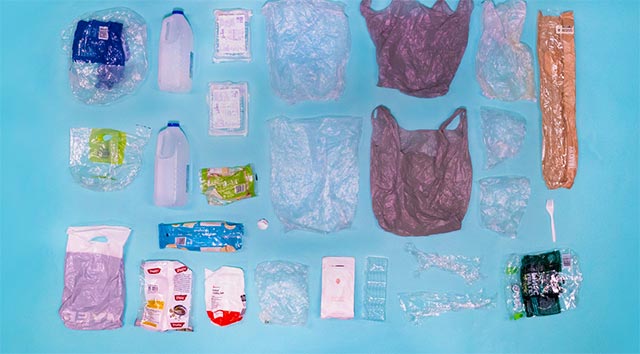 Three-quarters of plastic products contain toxic chemicals that can seriously harm human health.
Three-quarters of plastic products contain toxic chemicals that can seriously harm human health.
In a scientific paper published in the journal Environmental Science and Technology, the scientists found more than 1,400 different chemicals that exist in some of the resins they randomly selected for research, but now Only the identity, characteristics and chemical properties of 260 of them could be identified - a very large difference.
However, the team also found that 60% of plastic products (analyzed) had a common toxicity; 40% can produce oxidative stress, which is thought to be closely related to cancer, diabetes and some cardiovascular diseases; and 30% can cause serious damage to the endocrine system (related to cancer and developmental problems).
- Soak fruits and vegetables in salt water to eliminate toxic chemicals, mistakes need to change
Identify some harmful plastics
During the study, Professor Martin Wagner and colleagues discovered that the chemicals in polyvinyl chloride (PVC, usually marked as 3 in the recycling code) and polyurethane (PUR) were the most toxic. PVC (often used as food wrap) when molten can create compounds that destroy hormones, cause cancer as well as many other dangerous diseases.
Meanwhile, polyethylene terephthalate (PET, recycling code 1, commonly used as a container for liquid foods) and high-density polyethylene (HDPE, recycling code 2, are often used to make resistant products). Good impact, less deformed, scratched, especially able to withstand temperatures of 120 degrees C for a short time or 110 degrees C for a long time) is considered less toxic.
- Contact with this chemical can deform the child's hormones
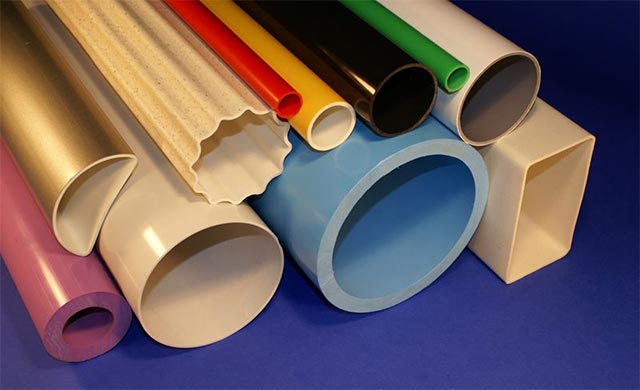 PVC is extremely toxic plastic, so it is rarely used as household goods, food containers
PVC is extremely toxic plastic, so it is rarely used as household goods, food containers
'The chemicals in plastic can be harmful during use or when misused. Although in-depth studies on the true harms of plastics and their link to some common diseases in the modern world have yet to be clearly delineated in many cases, chemicals The toxic substance should not have been in the plastic in the first place, "Professor Wagner said.
Yes, the problem is that we can identify some of the problematic plastics and need to avoid regular use, but testing shows that the toxicity problems in plastics are very wide. , can be found in almost all plastics. In other words, all plastics are toxic in some way and do not necessarily cause direct harm to human health.
As such, it is clear that the first measure to be taken is to reduce overall plastic use. In particular, efforts should be made to minimize the products made of PVC (labeled with recycling code number 3) and plastics labeled with recycling code number 7, because it is not clear that they are made from What kind of plastic, how hazardous compounds it is.
- It turns out how many years ago we cooked rice the wrong way, leading to the risk of arsenic contamination without knowing it
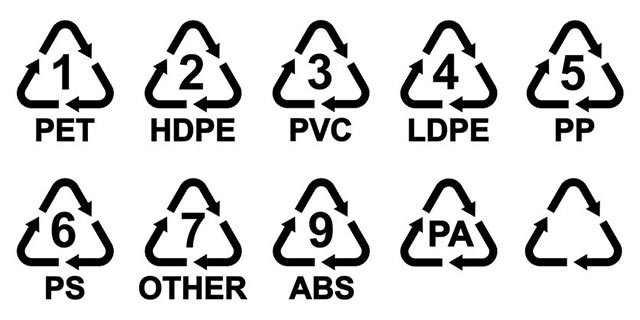 Recycling codes are often printed on plastic products
Recycling codes are often printed on plastic products
Plastic grade 7 is the most toxic and is thought to be closely related to infertility, diabetes and cancer. However, they are still commonly used in everyday items, even for food containers, such as large water jugs, chili sauce jars, instant food containers, DVDs, Blu-ray discs and many other household items.
To learn more about common commonly used plastics according to recycling codes and their harms, please refer to the following article: 'What do the symbols on the bottom of plastic bottles mean?'.
- It turns out that we have been using carefree carcinogens for a long time in our daily lives
Minimize harm from plastic
Having said that, limiting the use of plastic products in general is probably the best way to avoid exposure to hazardous substances because in modern life, it is difficult to completely eliminate this useful material. Try to take some of the following measures to prevent the harmful effects of plastic on the body:
Do not reuse disposable plastic such as mineral water bottles, plastic straws . The use of mineral water bottles and soft drinks as household containers is a saving habit of many people. , but the long-term harm that employment does to the body will be far greater than the economic gain.
Limit the use of ready-to-eat foods, food and drinks stored in plastic trays and plastic bottles.
- Can glass, plastic, wood and porcelain bowls be used for microwave ovens?
 Use glass containers to preserve food instead of plastic containers
Use glass containers to preserve food instead of plastic containers
Limit food storage in plastic containers. Many families have a habit of putting leftovers in plastic containers to store in the fridge, which will cause chemicals to stop contaminating food, especially for greasy, fatty foods. , or acidic, highly alkaline. Instead, use food containers made of stainless steel, glass or porcelain.
Do not heat plastic, restricting placing hot foods directly on plastic trays and especially plastic bags. Even plastic items stored in cars in the heat can release toxic chemicals.
You should read it
- Things to know when using food plastic
- Chemical recycling can be a solution to the problem of plastic waste pollution
- 'Round the eyes' with 21 innovative ways to recycle old plastic bottles
- How are people using plastic to destroy nature?
- What do the symbols at the bottom of plastic bottles mean?
- Deodorize plastic containers easily with 7 simple tips
- The Earth has more than 8 billion tons of plastic, weighing about 1 billion elephants
- How to Seal a Plastic Gas Tank
May be interested
- Deodorize plastic containers easily with 7 simple tips
 the smell of plastic food containers is difficult to remove, making many people uncomfortable. in such a situation, follow one of the tips below to help the smell of food and grease in plastic containers disappear.
the smell of plastic food containers is difficult to remove, making many people uncomfortable. in such a situation, follow one of the tips below to help the smell of food and grease in plastic containers disappear. - The Earth has more than 8 billion tons of plastic, weighing about 1 billion elephants
 from 1950 to 2015, in just over six decades, the world produced more than 8.3 billion tons of plastic, a total weight of 25,000 empire state buildings, 381m high in the us or 1 billion elephants.
from 1950 to 2015, in just over six decades, the world produced more than 8.3 billion tons of plastic, a total weight of 25,000 empire state buildings, 381m high in the us or 1 billion elephants. - Internet has not impacted much on consumption style
 compared to traditional sales methods, the internet does not have a big impact on consumer purchasing decisions. that is the new result of the pew internet & american life research project.
compared to traditional sales methods, the internet does not have a big impact on consumer purchasing decisions. that is the new result of the pew internet & american life research project. - 'Round the eyes' with 21 innovative ways to recycle old plastic bottles
 to enhance your dexterity and creativity, on the bright side page has given you 21 super unique ideas on how to recycle old plastic bottles into extremely useful items. invite you to consult!
to enhance your dexterity and creativity, on the bright side page has given you 21 super unique ideas on how to recycle old plastic bottles into extremely useful items. invite you to consult! - Instructions to disable Microsoft Consumer Experiences on Windows 10
 on windows 10 system, microsoft installs or proposes to install applications, windows games store like candy crush soda saga, flipboard, twitter, photoshop express, minecraft .... to be able to do this, microsoft uses use microsoft consumer experiences features built into windows 10.
on windows 10 system, microsoft installs or proposes to install applications, windows games store like candy crush soda saga, flipboard, twitter, photoshop express, minecraft .... to be able to do this, microsoft uses use microsoft consumer experiences features built into windows 10. - Linux is everywhere
 quietly, but at a very fast pace, linux is penetrating increasingly into consumer services, devices and products, from email to cars. a revolution called linux is quietly embracing consumer technology.
quietly, but at a very fast pace, linux is penetrating increasingly into consumer services, devices and products, from email to cars. a revolution called linux is quietly embracing consumer technology. - How to Straighten a Plastic Tube Cable Holder
 there are many products on the market designed to keep your cables organized for your computer, tv, and for other electronics around your home. one of them is a plastic tube slit down the middle to put the cables into. this works great,...
there are many products on the market designed to keep your cables organized for your computer, tv, and for other electronics around your home. one of them is a plastic tube slit down the middle to put the cables into. this works great,... - How to Seal a Plastic Gas Tank
 plastic gas tanks are in high demand in the world of motorcycle racing and atv enthusiasts. a plastic gas tank can weigh less than half of a comparable metal gas tank and it is easy to mold into shapes to fit odd configurations. seamless...
plastic gas tanks are in high demand in the world of motorcycle racing and atv enthusiasts. a plastic gas tank can weigh less than half of a comparable metal gas tank and it is easy to mold into shapes to fit odd configurations. seamless... - 6 million people in the US are using water that contains toxic chemicals
 researchers have analyzed industrial chemical concentrations used in 36,000 water samples from all over the united states and show that '6 million people living in the us are using water containing toxic chemicals'.
researchers have analyzed industrial chemical concentrations used in 36,000 water samples from all over the united states and show that '6 million people living in the us are using water containing toxic chemicals'. - Why is the bottom of a plastic bottle never flat?
 most of the current plastic bottles, especially the soft drink bottles, have the bottom of the bottle designed bumpy, with 5 protrusions in the form of folds, never as flat as glass bottles.
most of the current plastic bottles, especially the soft drink bottles, have the bottom of the bottle designed bumpy, with 5 protrusions in the form of folds, never as flat as glass bottles.










 Research: The phenomenon of cannibalism in the animal world and human society
Research: The phenomenon of cannibalism in the animal world and human society 'Cats are liquids' and 'laughable' studies in the Ig Nobel Prize 2017
'Cats are liquids' and 'laughable' studies in the Ig Nobel Prize 2017 Details of the plan to turn a successful Mars man for only $ 100,000 by Elon Musk
Details of the plan to turn a successful Mars man for only $ 100,000 by Elon Musk 9 most famous Nobel prizes in history, contributing to change the world
9 most famous Nobel prizes in history, contributing to change the world The 2017 Nobel Prize for Medicine is awarded to 3 scientists
The 2017 Nobel Prize for Medicine is awarded to 3 scientists Things not everyone knows about the prestigious Nobel prize
Things not everyone knows about the prestigious Nobel prize